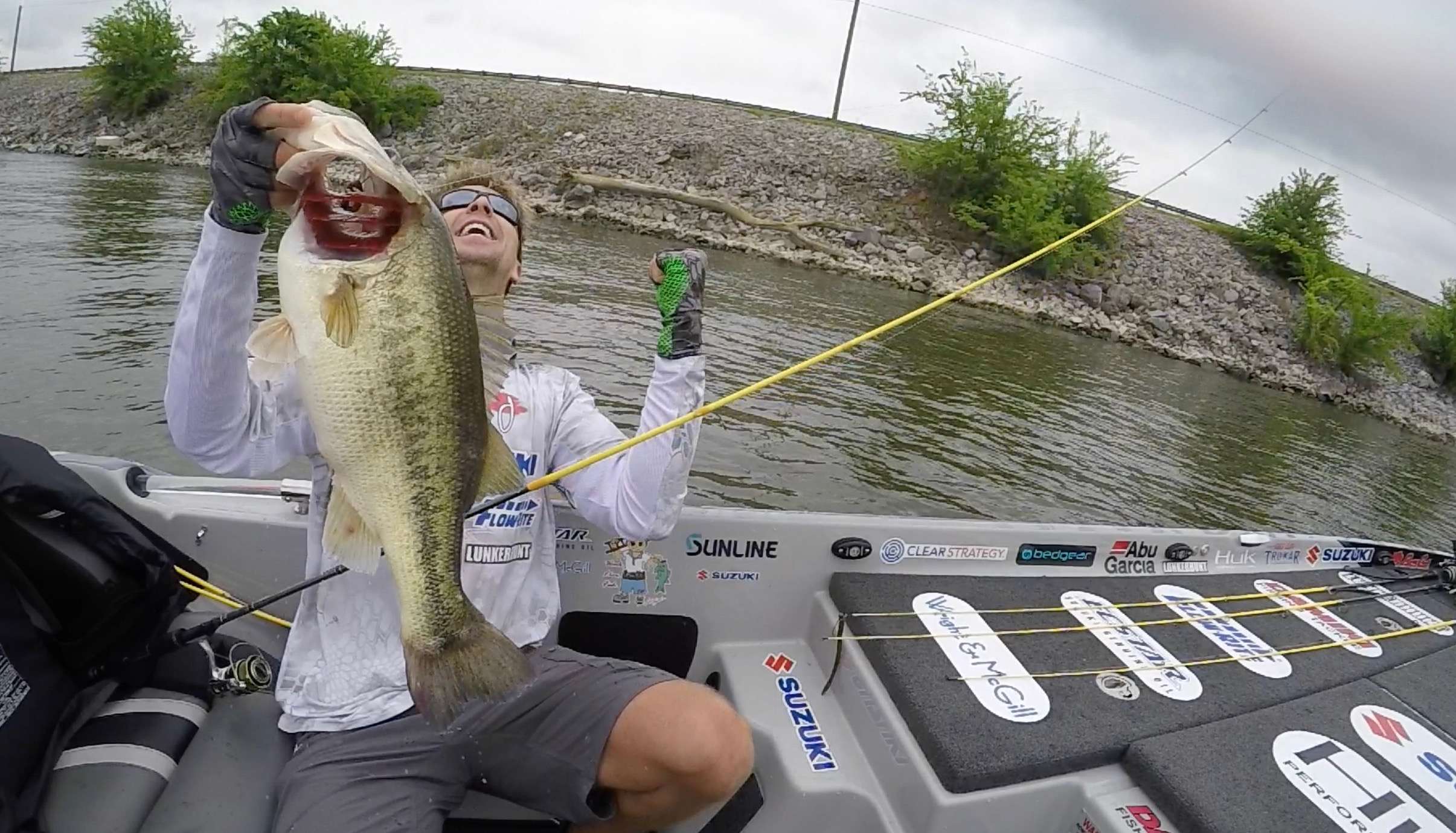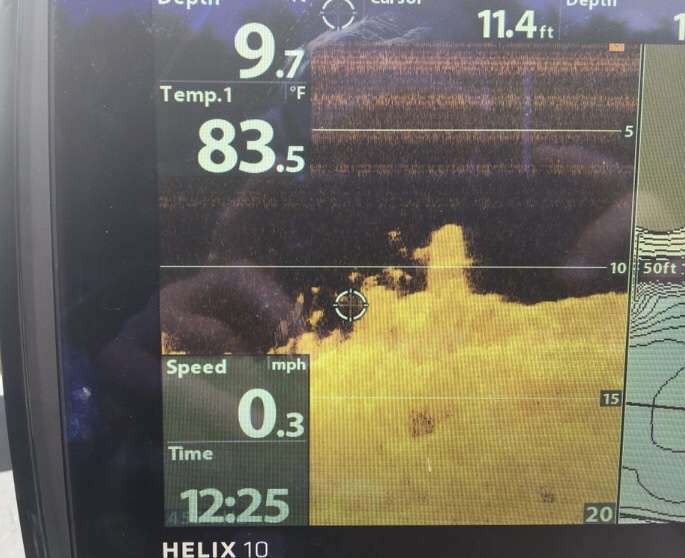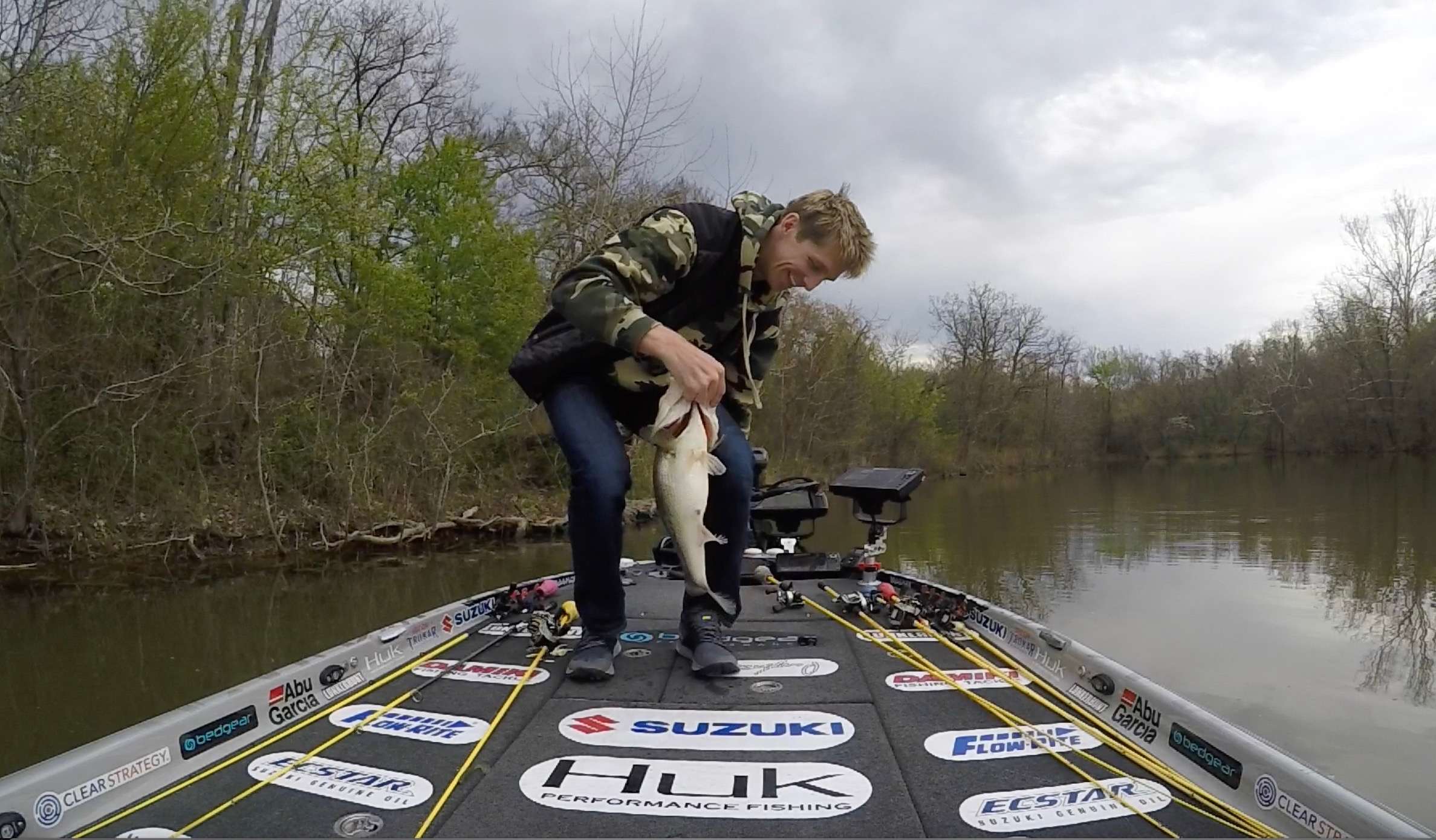
Watch Chad Pipkens during Bassmaster Elite tournaments and you’ll likely conclude that he’s an outsider. In fairness, the likable pro from Holt, Mich., has plenty of friends and interacts well with others, but we’re not talking social skills. Rather, Chad Pipkens has learned the value of seeking what most overlook and avoiding what many hammer.
Here’s the deal: While a lot of guys love heading to “flipping” lakes where they can keep a stout rod in their hand all day in hopes of yanking big fish out of heavy cover, Pipkens has a different view. Harnessing his Great Lakes prowess, he’s more comfortable scanning the perimeters of the heavily trafficked zones to find subtle fish magnets that go largely untouched during the shallow-focused events.
“I’m not a slow-down-and-flip guy,” Pipkens said. “I know some guys have made a living doing that; I will not. I have no problem flipping, but you have to find fish that are feeding; there are always fish biting somewhere.”
Fish the unseen
Pipkens’ logic fits just about anywhere the shallow bite takes top billing, but it tends to shine even more so in overall shallow fisheries lacking a true offshore zone. For example, while Lake Dardanelle’s modest depths of mostly dirty water invite the bank-beating parade, he has found some of his better opportunities a rod length behind the main route.
When the Elites visited this Arkansas River gem, an influx of mud tanked his deal, but what Pipkens found exemplified his strategy.

“There are lily pads everywhere and everyone is going down frogging them, flipping them and throwing a swim jig, but the majority of fish were sitting off the edges because the water was falling,” he said. “There were little points and little bits of broken up rock. There would be seven or eight bass suspended on a little rock pile literally 6 feet off the lily pad line. It looks like you’re flipping, but the structure and targets are actually right under your boat.
“I had a handful of areas with single pieces of wood or pieces of brush that had fallen in or gotten caught in a channel bend or a point when the water was high. Ninety percent of the other guys aren’t fishing things like that; they’re just cruising down the bank doing their deal.”
When it’s right
Pipkens loves falling water, as displaced fish generally slide off to those perimeter spots, thereby prompting maximum occupancy. However, rising water yields the opposite effect. At the 2018 Elite tournament on Kentucky Lake, Pipkens placed 27th and saw both ends of the water level influence.
“I was in sixth place after Day 2, and I was catching them on little pieces of wood and little rock piles,” he said “But on the third day, the water rose a foot and those fish feel that and moved to the bank.
“When the water’s rising, those fish feel it and (the outside) stuff goes away. But when those fish are up shallow and the water’s falling, those fish just slide off to that first break.”

It’s easy to get locked into a mindset and overstay one’s welcome — particularly in times of fluctuation but — flexibility is the comfortable recliner in which opportunity comes to rest.
“The big thing is being able to recognize when that’s happening, because you may hit those little sweet spots two or three times a day before you catch them,” Pipkens said. “That first day at Dardanelle, the water rose and started to stabilize. I had one keeper before 11 o’clock and then between 11 and 1, I caught nine.
“Sometimes, it takes timing and you need to be able to recognize when you need to adjust and go flip for a while if the fish moved up. The big thing is knowing when it’s happening and giving yourself enough time to make the adjustment.”
Seasonally, Pipkens said winter offers the lowest level of perimeter opportunity, as fish aren’t in the moving mood. Spring, however, is primetime for this outside strategy because fish are moving in and out of the shallow ranges where they’ll frequently stage on tiny pieces of cover.
Background and application
Recalling his early years of making long zig-zagging passes over Great Lakes bottom and squinting to detect the slightest bottom variances on a depthfinder with a 5-inch screen and no mapping card. Anywhere the bottom came up, he’d mark it and return later for closer inspection.
“Growing up on the Great Lakes, you don’t really learn how to fish; you learn how to be efficient,” he said. “You’re not flipping, you’re not deep cranking, you’re not running the bank — you’re not learning the style of fishing that goes on in basically all other places. What you are learning is how to pay attention to detail. You can win an event off a single rock, a 6-inch rise or where the bottom changes from sand to gravel.
“I like to be very specific. Some guys like to float around on Lake Erie or St. Clair, and when they’re biting and roaming, you can catch them like that. But the key is knowing exactly where those fish are positioning, so you can fish more of those sweet spots each day.”
Pipkens applies this thought to his practice when he can afford a more purposeful pace.
“I spend a lot of time marking those little pieces because you don’t find that stuff just fishing,” he said. “You have to spend some time driving the boat around and just side-scanning. It’s hard to do that in a tournament when you’re trying to get that next bite.
“I don’t need to know if fish are on every piece of cover, because that changes. I just need to know where a lot of that isolated cover is. That way, when I start to get on that deal, I can run new water that I’ve already graphed.”
Tournaments are all about time management and Pipkens wants to give himself the best chance of maximizing every minute. Doing so means fishing intentionally.
“Finding those little isolated pieces of cover in practice means you’re not wasting two hours finding them in the tournament — you’re just figuring out which ones are good. The lake structure doesn’t change; the fish change.
“You always want to fish your strength. Mine is the ability to move around and be very efficient with where I put my bait.”

